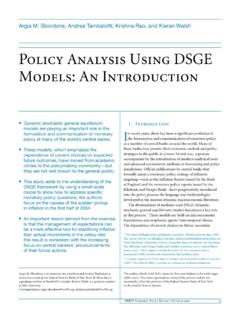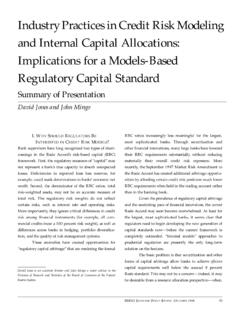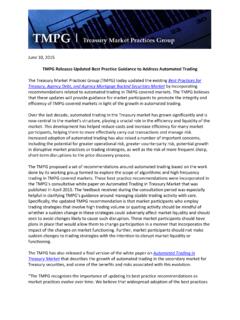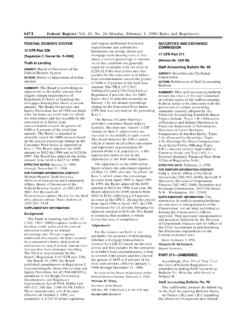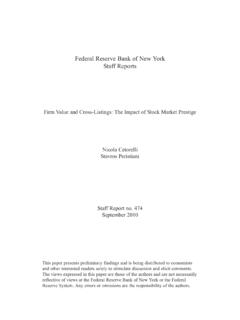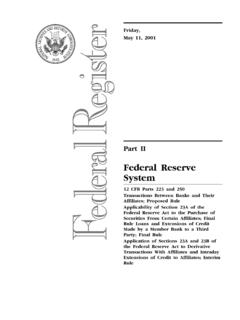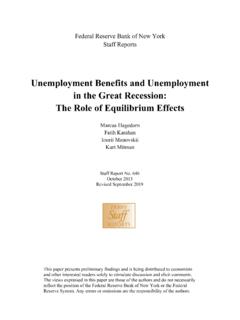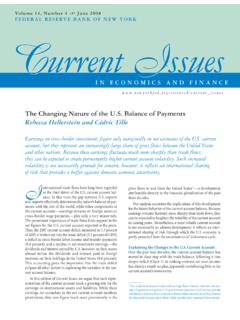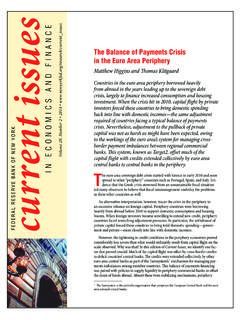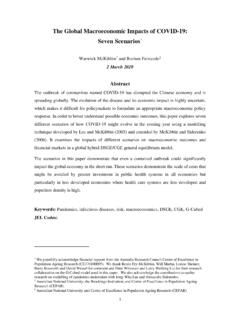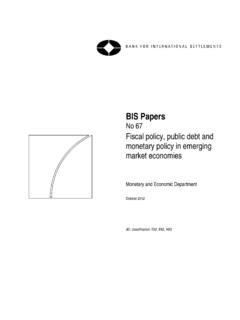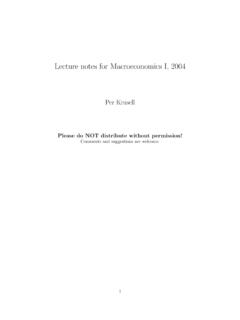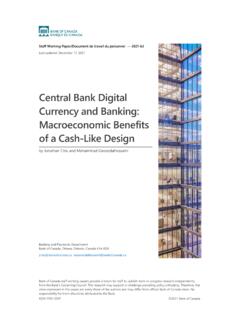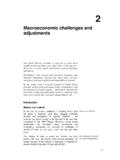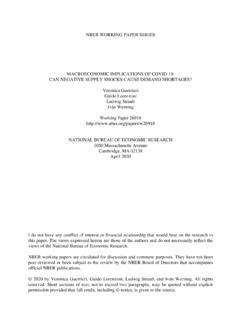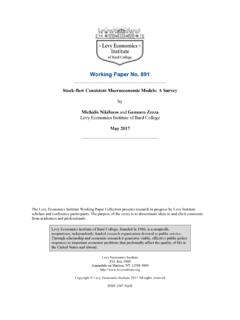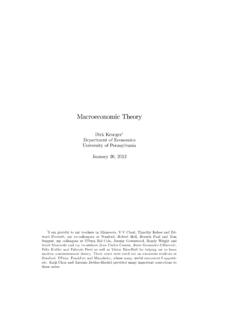Transcription of Macroeconomic Nowcasting and Forecasting with Big Data
1 This paper presents preliminary findings and is being distributed to economists and other interested readers solely to stimulate discussion and elicit comments. The views expressed in this paper are those of the authors and do not necessarily reflect the position of the Federal Reserve Bank of New York or the Federal Reserve System. Any errors or omissions are the responsibility of the authors. Federal Reserve Bank of New York Staff Reports Macroeconomic Nowcasting and Forecasting with Big Data Brandyn Bok Daniele Caratelli Domenico Giannone Argia Sbordone Andrea Tambalotti Staff Report No.
2 830 November 2017 Macroeconomic Nowcasting and Forecasting with Big Data Brandyn Bok, Daniele Caratelli, Domenico Giannone, Argia Sbordone, and Andrea Tambalotti Federal Reserve Bank of New York Staff Reports, no. 830 November 2017 JEL classification: C32, C53, C55, E32 Abstract Data, data, data .. Economists know it well, especially when it comes to monitoring Macroeconomic conditions the basis for making informed economic and policy decisions. Handling large and complex data sets was a challenge that macroeconomists engaged in real-time analysis faced long before big data became pervasive in other disciplines.
3 We review how methods for tracking economic conditions using big data have evolved over time and explain how econometric techniques have advanced to mimic and automate the best practices of forecasters on trading desks, at central banks, and in other market-monitoring roles. We present in detail the methodology underlying the New York Fed Staff Nowcast, which employs these innovative techniques to produce early estimates of GDP growth, synthesizing a wide range of Macroeconomic data as they become available. Key words: monitoring economic conditions, business cycle, Macroeconomic data, large data sets, high-dimensional data, real-time data flow, factor model, state space models, Kalman filter _____ Bok, Giannone, Sbordone, Tambalotti: Federal Reserve Bank of New York.
4 Corresponding author: Giannone (email: Caratelli contributed to this paper while working at the Federal Reserve Bank of New York. The authors thank Grant Aarons, Patrick Adams, Matthew Cocci, Jessica Iannuzzi, Theresa Izzillo, Shahrouz Khalili, Eric Qian, Camilla Schneier, and Anna Snider, who contributed at various stages to the development of the New York Fed Staff Nowcast, as well as Dick Peach and many colleagues at the New York Fed for helpful discussion. The views expressed in this paper are those of the authors and do not necessarily reflect the position of the Federal Reserve Bank of New York or the Federal Reserve System.)
5 1 [O]nly by analyzing numerous time series, each of restricted significance, canbusiness cycles be made to reveal themselves definitely enough to permit closeobservation. Burns and Mitchell, eds (1946),Measuring Business Cycles( )I IntroductionFor more than a century, government agencies and private institutions have been collectingand organizing information on many facets of the economy, and over time the scope of datacollection has grown and the quality of data has improved. Today, data are released to thepublic on a regular schedule: almost every day new data become available and are analyzed,commented and interpreted.
6 Real-time monitoring of Macroeconomic conditions has becomethe full-time job of dedicated economists at central banks, government agencies and thecorporate world, who sift through big and complex data to distill all relevant that come out as surprises move markets, sometimes significantly, as investors re-assess their expectations about the state of the the term big data typically conjures the image of data collected via theInternet about individual habits on consumption and social media, big data was a challengeto macroeconomists well before the collection of more granular data became pervasive inother disciplines.
7 From the pioneering search for patterns and regularities in the data thatled Burns and Mitchell to identify the business cycle and the parallel effort of Kuznets tobuild the National Income and Product Accounts, to the vast array of expert data collectionand analysis done today, macroeconomists have embraced the big data challenge, pushingthe frontier of statistical methods and refined methodologies in time-series econometrics developed over the past two decadeshave made possible the construction of automated platforms for monitoring macroeconomicconditions in real time.
8 Giannone, Reichlin and Small (2008) built the first formal andinternally consistent statistical framework of this kind by combining models for big data andfiltering techniques. Because of the emphasis on the present, they dubbed it Nowcasting , a term originally used in meteorology for Forecasting the weather in the present and in thenext few hours. The model that we describe in this paper, developed at the Federal ReserveBank of New York, builds on that contribution. This Nowcasting model extracts the latentfactors that drive the movements in the data and produces a forecast of each economic series2that it tracks: when the actual release for that series differs from the model s forecast, this news impacts the nowcast of GDP growth.
9 This approach formalizes key features of howmarket participants and policymakers have traditionally produced forecasts, a process thatinvolves monitoring many data releases, forming expectations about them, and then revisingthe assessment of the state of the economy whenever facts differ from those model combines in a unified framework a variety of approaches developed over time formonitoring economic , whose detailed explanation we defer to Section 5, illustrates the evolution ofthe nowcast of annualized real GDP growth for 2016:Q4.[Insert Figure here.]
10 ]The black diamonds represent the weekly updates of the nowcast, , the predictions of themodel based on the information available at the dates indicated on the horizontal axis. Theirprogression reflects how the news in the data released each week change the nowcast for thatweek. The impact on the nowcast of news from a week s data releases is visualized by thecolored bar of that week, where the colors identify the categories of the data releases asindicated in the legend. For example, on November 11, the nowcast of real GDP growth forthe fourth quarter of 2016 was percent.
